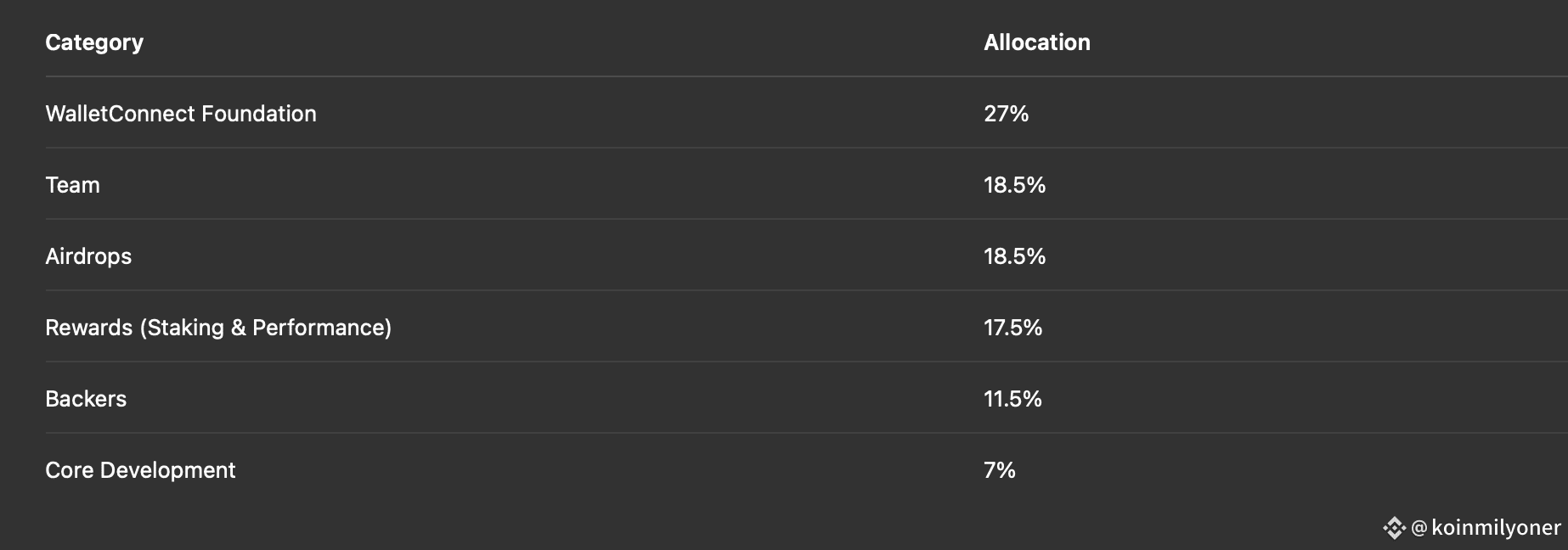What You Need to Know About the Fuel Behind Web3's Onchain UX Revolution
It's evident that user experience is the most important thing as Web3 moves closer to being used by everyone. That kind of user experience is feasible because of WalletConnect. It is a protocol that makes it easy to connect more than 600 wallets and 65,000 decentralized apps. This open-source network will make its own money, $WCT, which will benefit it a lot in the future.
This article discusses about WalletConnect Token (WCT), what it is, why it's important, and how it will help make the on-chain user experience of the future.
What is the purpose of the WalletConnect Token (WCT)?
The WalletConnect Token (WCT) is the most significant part of the WalletConnect Network. It gives individuals the ability to govern themselves, encourages them to work together, and rewards them for their hard work. This is not simply another token for utilities. It is a valuable asset that shows ownership, authority, and involvement in one of Web3's most important systems.
WCT operates on the OP Mainnet of Optimism, which means it can grow with OP while still being safe like Ethereum. This is a nice way to improve performance without trading up decentralization.
But what does WCT do?
The Four Ways WCT Can Help You
WCT isn't about guessing; it's about rules, rewards, and usefulness. The token does four main things to keep the network functional and decentralized:
1. Fees: The Economic Engine (Ready for the Future)
Right now, the network doesn't charge anything, but the token sets up a long-term economic system. The community may ultimately tell you when and how to start charging fees, based on how many people use the service and how effectively it functions.
The suggested Monthly Active User (MAU) pricing model would let the company develop in a way that is good for everyone and is based on actual use. Developers and dApps who utilize WalletConnect services will definitely find this structure to be flexible, able to grow, and work best for them.
People could be able to pay fees directly in WCT when the ecosystem adds additional features and levels. This would make the currency on the network stronger.
2. Rewards—Fuel for Growth
17.5% of the total WCT supply will go to community rewards to get more people involved. People who assist raise the network's standards will receive them. They will go to wallets, applications, node operators, and other people.
People will get rewards based on how well they perform and what they can show: • Uptime and latency for those that run nodes. • WalletGuide and WalletConnect Certified make it easy for people to use. • Everyone agrees on the rules for judging contributions from the community.
This strategy gives benefits to those that improve the WalletConnect environment and maintain it that way.
3. Staking: Keep the network safe and earn rewards over time
People who own WCT tokens may stake them to assist keep the network running smoothly and safely. Stakers obtain incentives from a special pool depending on: • The weight of their stake (there are limits to prevent whales from gaining too much), • The length of time their stake is locked up (the longer, the better), and • The total amount of participation.
Users may lock their tokens for a week to two years. They may choose to have them secured automatically or to re-stake them by manually. The design should be flexible enough to work for both those who have believed in it for a long time and others who are actively taking part.
4. Governance: From the Ground Up to Full DAO
One of WCT's most important jobs is to administer the business. At first, the WalletConnect Foundation will be in control of the ecosystem. But with time, a DAO (Decentralized Autonomous Organization) run by tokenholders will become stronger.
Token holders will:
• Vote on changes to the protocol
• Pick councils (like technical and partnerships)
• Approve budgets and reward systems
The gradual technique lets the network grow on its own and gives the community greater power. The end goal is to create a UX architecture for Web3 that is genuinely decentralized and run by people.

📊 WCT Tokenomics and an explanation of how the tokens are split up
There are only 1 billion WCT tokens in total, and the way they are spread out is carefully planned to maintain the network decentralized and last a long time:
This distribution shows that WalletConnect's goal is to provide power to innovators, customers, and communities, not simply early investors.
The Big Picture: How WCT Affects You
WCT doesn't want to be the next meme currency or asset that gets a lot of attention. Its main goal is to provide the Web3 UX layer ownership, sustainability, and new ideas.
It's really important to be able to connect to and use chains in a world where there are a lot of them. WalletConnect has already proved that it can connect. WCT now has the economic and governance infrastructure it needs to grow even more, with the community at its heart.
🔮 Last Thoughts
WalletConnect links individuals to the decentralized universe, and WCT is the fuel that makes the trip feasible and valuable. With WCT, you may choose how we interact with the most crucial part of crypto, which is its future.



